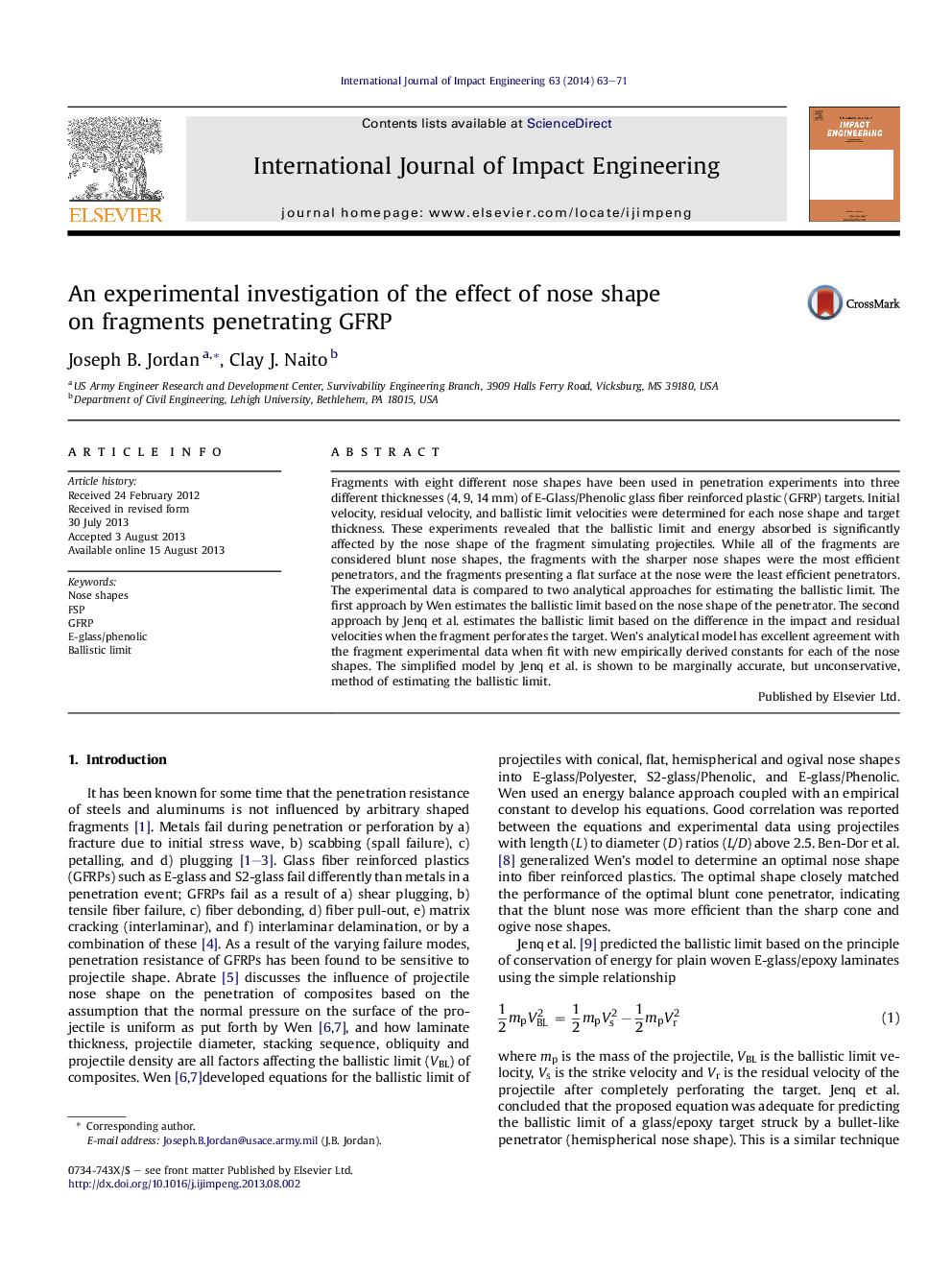| کد مقاله | کد نشریه | سال انتشار | مقاله انگلیسی | نسخه تمام متن |
|---|---|---|---|---|
| 778395 | 1464088 | 2014 | 9 صفحه PDF | دانلود رایگان |

• Fragments with different nose shapes have been used in penetration experiments into different thicknesses of GFRP targets.
• The shape of the nose of steel fragments significantly influences their penetration capability into GFRP.
• The experimental data is compared to two analytical approaches for estimating the ballistic limit.
Fragments with eight different nose shapes have been used in penetration experiments into three different thicknesses (4, 9, 14 mm) of E-Glass/Phenolic glass fiber reinforced plastic (GFRP) targets. Initial velocity, residual velocity, and ballistic limit velocities were determined for each nose shape and target thickness. These experiments revealed that the ballistic limit and energy absorbed is significantly affected by the nose shape of the fragment simulating projectiles. While all of the fragments are considered blunt nose shapes, the fragments with the sharper nose shapes were the most efficient penetrators, and the fragments presenting a flat surface at the nose were the least efficient penetrators. The experimental data is compared to two analytical approaches for estimating the ballistic limit. The first approach by Wen estimates the ballistic limit based on the nose shape of the penetrator. The second approach by Jenq et al. estimates the ballistic limit based on the difference in the impact and residual velocities when the fragment perforates the target. Wen's analytical model has excellent agreement with the fragment experimental data when fit with new empirically derived constants for each of the nose shapes. The simplified model by Jenq et al. is shown to be marginally accurate, but unconservative, method of estimating the ballistic limit.
Journal: International Journal of Impact Engineering - Volume 63, January 2014, Pages 63–71